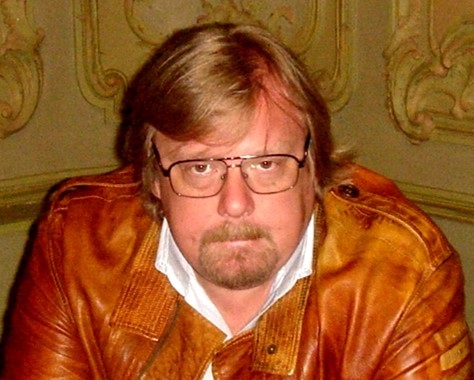Alexander Dovzhenko. Poetic Space of Immortality
- 作者: Статья V.1
-
Учреждение:
- S.A.Gerasimov Russian State Institute of Cinematography (VGIK)
- 期: 卷 13, 编号 3(49), 2021
- 页面: 25-40
- 栏目: THEORY AND HISTORY OF CINEMA | AUDIOVISUAL ARTS
- URL: https://old.vestnik-vgik.com/2074-0832/article/view/89539
- DOI: https://doi.org/10.17816/VGIK89539
如何引用文章
全文:
详细
The article focuses on the theme of death and rebirth in the works of A.Dovzhenko. In fact, the theme of death has been essential throughout the history of cinema. It is a matter of concern and representation in almost every film. But the authors do not always have an original concept of death. Among those for whom this topic is a through line are K.T.Dreyer, I.Bergman, A.Tarkovsky, J.-L.Godard, A.Sokurov, J.Cocteau. Death and resurrection play a key role in the films of A. Dovzhenko whose creation marked a milestone in the history of world cinema and set a special trend in its development. He has influenced a great many directors around the world, film historians and theorists in various countries keep dwelling on his work. Although Dovzhenko for many years is no more, his creative legacy is topical and relevant to this day. His art has been highly researched, still undoubtedly much yet remains to be revealed and studied, the theme of death and resurrection in particular. While the image of death was an important subject matter in Soviet art, the thanatological aspect as a topic in its own right in this historic period was frowned upon so that researchers have preferred to bypass this fairly specific question. The present paper is a fragment of a would-be book devoted to concepts and forms of representation of death in the world cinema. The paper focuses on analyzing Dovzhenko’s films "Earth" and "Shchors". It deals with the typology of death and the myth of resurrection, both important elements of the his philosophy of life. The director’s mindset is put in film research, philosophic and aesthetical perspectives.
全文:
Статья Vladimir
доктор искусствоведения, доцент ВАК, профессор кафедры киноведения ВГИК, заведующий Аналитического отдела (Информационно-аналитического центра по развитию кинообразования и кинопросвещения ВГИК)
S.A.Gerasimov Russian State Institute of Cinematography (VGIK)
, 3, Wilhelm Pik street, 129226 Moscow, Russia
编辑信件的主要联系方式.
Email: vladvinogradov_v.v@mail.ru
References
- Aryes F. (1992) Chelovek pered liczom smerti [L’Homme devant la mort / The Hour of Our Death] / Filipp Aryes; per. s fr. V.K.Ronina; obshh. red. S.V.Obolenskoj; predisl. A.YА. Gurevicha [Pp. 5-30]. Moscow: Progress; Progress-akademiya, 1992. 526 p. (In Russ.).
- Dovzhenko A.P. (1966) Sobranie sochinenij [Collected Works]: V 4 t. / In-t istorii iskusstv. Soyuz rabotnikov kinematografii SSSR. Centr. arxiv literatury i iskusstva SSSR. Moscow: Iskusstvo, 1966–1969. T. 1. 1966. (In Russ.).
- Muravyev D.A. (2011) Obraz plyaski v kinematografe Dovzhenko [The ecstatic dance Dovzhenko’s cinema] // Artikulyt. 2011. № 1(1). Pp. 1-9. (In Russ.).
- Uolt U. (1954) Izbrannoe [Favorites]: Per. s angl. / Uolt Uitmen; [Vstup. statya M.O.Mendelysona]. Moscow: Goslitizdat, 1954. 307 p. (In Russ.).
- Hart Nibbrig Kristiaan L. (2005) Estetika smerti [Death aesthetics] / Kristiaan L.Hart Nibbrig; per. s nem. A.Belobratova. Saint Petersburg: Izd-vo Ivana Limbaxa, 2005 (GUP Tip. Nauka). 420 p. (In Russ.).
- Khrenov N.A. (2013) Kinematograficheskaya tanatologiya [Cinematic thanatology] // Otechestvennye zapiski. 2013. № 5 (56). Pp. 310-332. (In Russ.).
补充文件
没有额外的文件显示






